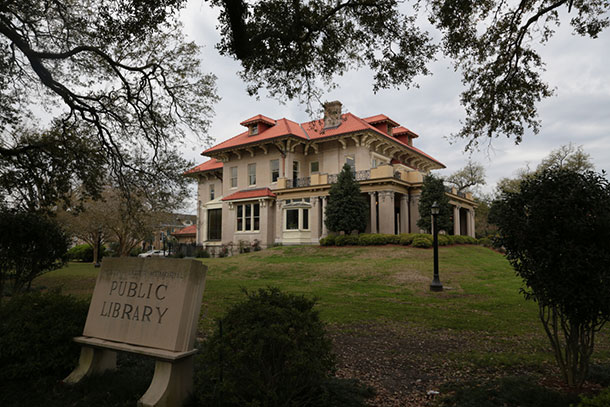Uptown Homes for Sale
Uptown is a leafy residential neighborhood with spectacular 19th century architecture and plenty of shopping and dining options.
The Uptown District begins upriver of the Garden District at Napoleon Avenue, stretching west to Jefferson Avenue. It’s a heavily residential area with late-19th century houses and small commercial properties. It’s known for its shopping and dining strip on Magazine Street, and the grand and photogenic St. Charles Avenue. Lush greenery and a peaceful vibe complete the picture.
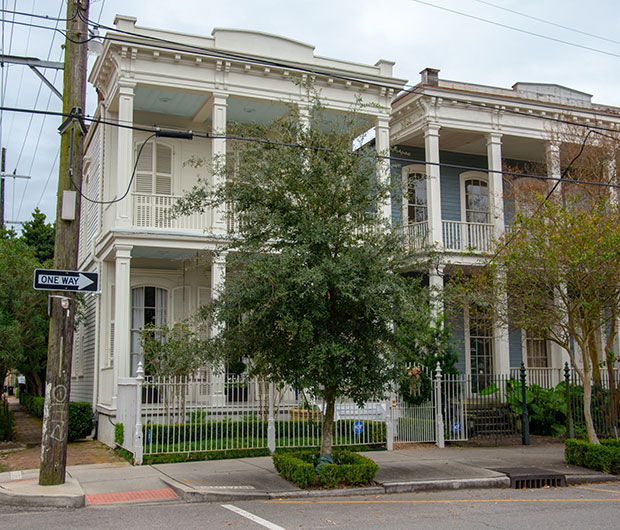
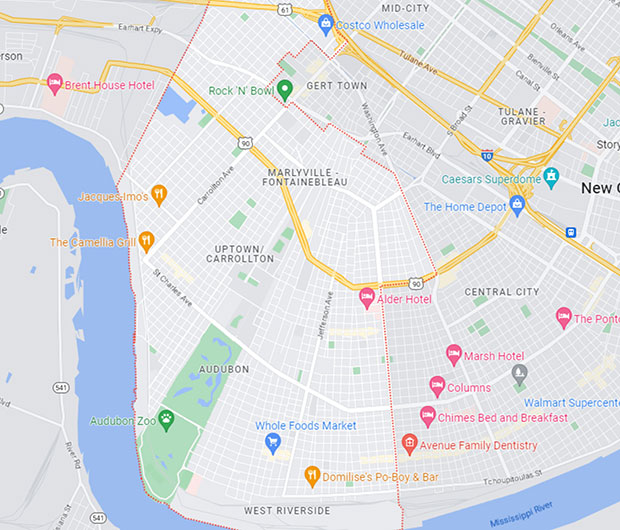
Where Is Uptown?
Uptown is a sub-district of the Uptown/Carrollton area. According to the U.S. Census Bureau, its total area is 0.64 sq. mi.
Uptown’s boundaries, as defined by the City Planning Commission, are:
North: LaSalle Street
East: Napoleon Avenue
West: Jefferson Avenue
South: Magazine Street
Since historically “uptown” was a direction, its boundaries are blurred to this day. Sometimes the broader definition of “Uptown” means the inclusion of a larger area upriver from Canal Street. That would include the Audubon and University districts, as well the Carrollton and the Irish Channel areas.
Some definitions of Uptown also contain the Broadmoor and Fontainebleau neighborhoods, and even the Central Business District (CBD). The CBD, also part of the original “American Sector” of the city, was referred to as Uptown in the 19th century, but mostly it’s no longer included in the definition.

Homes for Sale in Uptown, New Orleans
Why Buy a Home in Uptown?
Uptown is a tranquil, leafy neighborhood with amazing architecture and many local businesses. There’s plenty to love about Uptown. Below are some of our highlights.
Magazine Street. The 13 blocks of Magazine Street are very walkable and crammed with cafes, restaurants, and retail stores that offer art, vintage clothing, antiques, furniture, and more. Magazine Street is the main commercial artery that Uptown shares with the Garden District.
Ample Street Parking. Street parking can be a common complaint among New Orleanian homeowners, but this area boasts plentiful parking, as many residences also have off-street parking.
Mardi Gras Enthusiast’s Dream. Uptown is real estate gold for experiencing Carnival. All Uptown Carnival parades pass through the area.
St. Charles Avenue. With its canopy of majestic oaks and the world-famous streetcar line, St. Charles Avenue is storybook-picturesque. It retained a good number of historically significant 19th century mansions, but also offers thriving local businesses along the stretch of its Uptown section, including some popular restaurants and bars with imposing facades and balcony seating.
Audubon Park/Zoo. Going farther west, the magnificent Audubon Park and Audubon Zoo are only a short ride away and offer a plethora of events for the entire family year-round.
Uptown
Attractions
With the shopping stretch of Magazine Street, the mansions of St. Charles Avenue, the longtime neighborhood bars, and the award-winning dining options peppering the quiet residential streets, Uptown offers a welcome mix of innovative cuisine, contemporary style, and historic New Orleans. Below are some our favorite highlights.
Tulane and Loyola universities both have beautiful campuses there, providing the public with events year-round.
Tour Valence Cemetery, the classic above-ground resting place that’s not as famous as some other cemeteries of New Orleans but is no less culturally significant.
Order a dozen raw and a martini at Pascal’s Manale. The happy hour at this classic establishment is a tradition, and its BBQ shrimp has been winning accolades since the iconic restaurant’s inception in 1913.
Eat at an award-winning restaurant. Uptown is home to three top restaurants that elevate the city’s already admirable status as the culinary destination: Upperline with its upscale contemporary Creole menu, the intimate and sophisticated Gautreau’s, and Pizza Domenica (try the roasted cauliflower and muffuletta pizza).
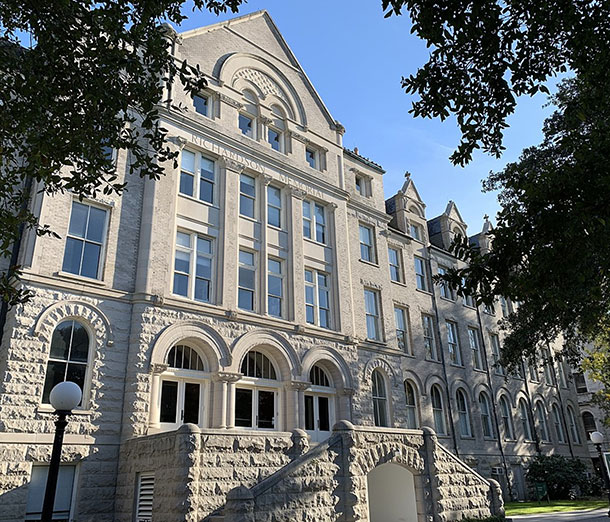
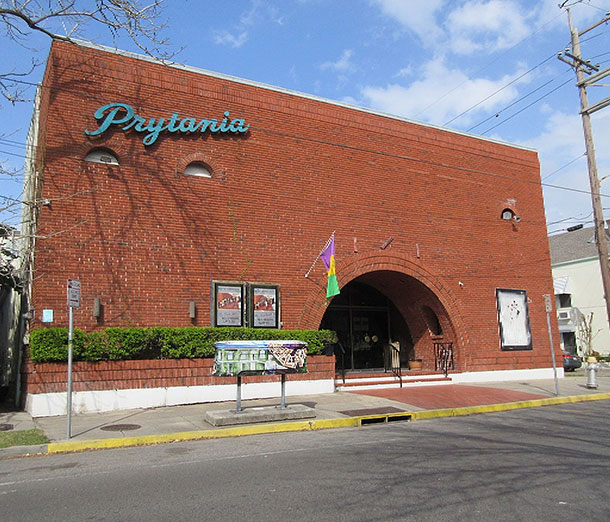
Catch a movie at the historic single-screen Prytania Theatre.
See The Soul Rebels at Le Bon Temps Rouler on any given Thursday night.
The area boasts a high concentration of private and public schools, including Samuel J. Green Charter School, Isidore Newman School, De La Salle High School, Academy of the Sacred Heart, and Sophie B. Wright Charter School.
Visit the Milton H. Latter Memorial Library, located in an imposing 1907 neo-Italianate mansion on St. Charles Avenue.
Grab a grilled shrimp po-boy at the hole-in-the-wall, cash-only Guy’s Po-Boys, immensely popular with the locals.

History of Uptown, New Orleans
Uptown was part of lands granted to Louisiana Governor Jean-Baptiste Le Moyne, Sieur de Bienville, in 1719. The land was subdivided into smaller plantations in 1723. The neighborhood was once known as Faubourg Bouligny, eventually becoming part of Jefferson City. It was annexed by New Orleans in 1870.
The first inhabitants were Americans who came to the city after the Louisiana Purchase and settled uptown in what later was colloquially referred to as the “American Sector” (as opposed to predominantly French and Creole downtown areas such as the French Quarter). Like many other parts of the city, Uptown experienced an influx of immigrants from Germany, Italy, and Ireland, who started their own businesses.
The streetcar service on St. Charles Avenue started in 1835, which spurred development. Tulane University established its campus in the area in 1894, followed by Loyola University 10 years later. Today, Uptown retains many of its historic homes. It’s a thriving neighborhood with well-preserved architecture, lots of greenery, and bustling commerce.
